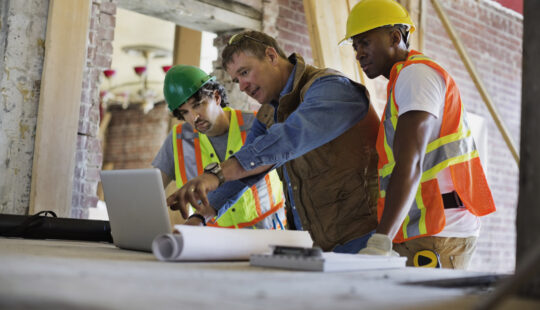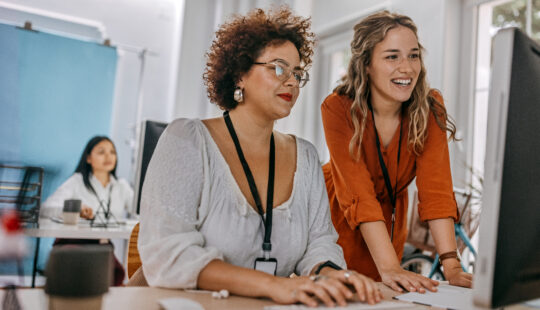On the latest episode of The Best Run Podcast, I spoke with Kate Moonen, Head of Marketing and Digital Experience for Veolia ANZ, and Steve Bennetts, Head of Growth and Strategy, Employee Experience at Qualtrics, to discuss the importance of employee sentiments and pulse checks, particularly in light of the global pandemic.
Kate’s career has been focused on customer marketing and personalised experiences for driving sales and customer loyalty. Whilst working for Veolia, she was asked to be part of COVID response team – to ensure people receive timely and consistent information during the pandemic while keeping tabs on staff during this challenging period.
“One of our biggest challenges, particularly during the pandemic, came from having a such a diverse workforce that is literally all over the country,” Kate explained. “I’ve had the lucky pleasure of traveling all the way to Newman in Western Australia, which is a very remote depot where we operate. We have employees working there, others that are based in major cities or metro areas, with anyone from truck drivers to machine operators, to engineers, to lawyers, to sustainability experts.
“It’s a very diverse workspace, so technology has been really important in helping us reach and meet all of those different employee types since they all have different work schedules and different ways of operating.”
Steve noted that many organisations with diverse and widely dispersed workforces faced similar challenges during the pandemic outbreak. “Typically, we would have seen organisations dealing with the remoteness of their locations, but during the pandemic, we saw a lot of originations having to move their workforce into their own homes.
https://player.whooshkaa.com/episode?id=814005
“Technology has been critical for a lot of organisations to reach out and have conversations with employees. Getting that feedback is absolutely critical, especially in those fast-moving days during the early part of the pandemic – to understand people’s needs and what was happening at the time.”
Kate said Veolia had previously measured employee sentiment annually or bi-annually through engagement surveys. “These were typically at the same time each year, but it was a little bit challenging getting engagement from some of the operational areas since a lot of them didn’t have computers or were working off a laptop, so they weren’t always able to sit down and fill in that engagement survey, which was reasonably lengthy and quite a big ask.
“Through the pandemic we had to adapt because we had to reach those employees faster, we had to take quicker pulse checks to reach them individually. We did a big process around collecting mobile phone information from employees so we could start to communicate via SMS and that has flowed through to our day-to-day operations.
“We’re now able to, in a more agile way, take the pulse of our employees and send content to them, such as video messages from the CEO or from their leaders, which they can quickly access from their phone rather than wait until they get back to the depot or home computer.”
“The feedback has been really positive; I think people are feeling pleased and much more in the loop because of that personalised experience we’re now offering.”
Kate was surprised by the level of engagement from the surveys Veolia received from staff. “You do wonder about the uptake or engagement with people who are perhaps out in the field, or operational areas, or even working at home – but we consistently had really excellent response rates to our range of pulse surveys that we issued.
“I think people felt that they wanted to take the opportunity to be heard, and the important thing for us as a team was to show that we’re receiving and acting on that feedback, communicating that feedback to the broader business. We would regularly share communications, showing what came out of the latest pulse and what we’re going to do about that, which was critical in maintaining that level of engagement. If you’re asking people for their time, I think it’s critical that you’re demonstrating that you’re going to do something with the feedback they provide.”
Steve agreed with Kate, highlighting how organisations should collect data to inform future decisions and implement change. “This is one of those critical learnings as we look forward into the future of work. driving the next stages going out into the post-pandemic stage. We still want to be able to collect that feedback and act on that feedback with the same velocity and speed and the only way that we can really do that is through a digital listening platform that allows you to scale those listening programs, the feedback, and then the actions on top of that.
“That’s why we’re seeing, encouragingly, the experience management platform that companies are using, like Veolia using us, to rollout and really capture information and drive the success of people returning back to work or back to whatever this new world of work looks like.”
Steve explained how Qualtrics release a working remote pulse that helped organisations quickly gauge employee sentiment during the early stages of COVID. “I think Veolia took about 30 minutes to take that, transform it, and get at least the first cut out to their people so they could start collecting data. It was critical to have that speed and ability to be rapid around that. With the Qualtrics solution, we were able to provide that ability to capture and rapidly collect that information in real time and get those insights driving through it.
“Veolia used our listening platform and the dashboards to get this information out to the managers as well, and this was something critical we saw across a number of organisations that faced the same problem of listening to their people at scale and getting that information rapidly back to them. Veolia really captured it through SMS technology and using that also as a communication – using it to send out information; not just collect it.”
To hear more from our discussion about employee sentiment, adaptation, and the future of work, listen to the full episode of The Best Run Podcast here.



